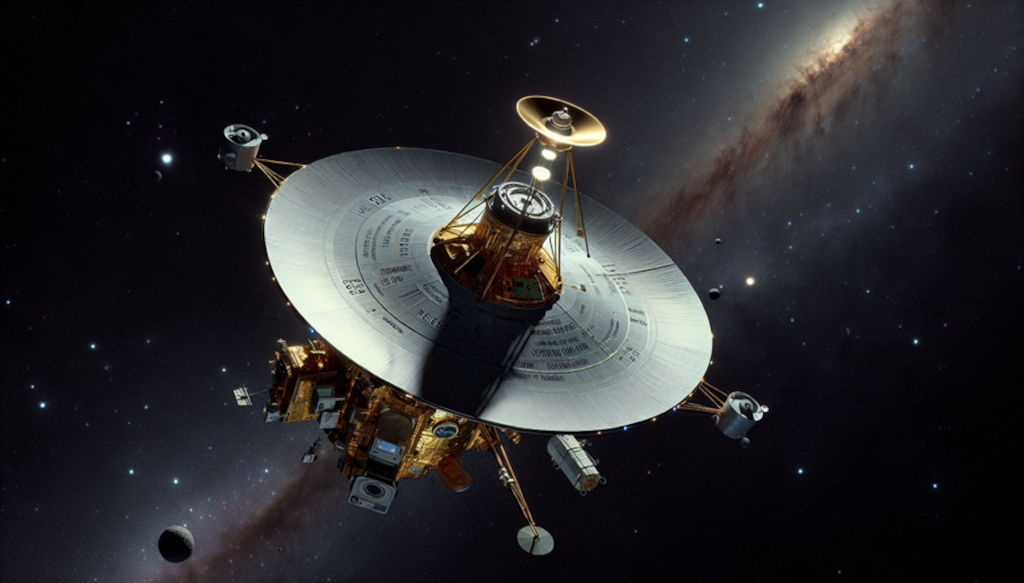It’s easy to think of Earth as a small blue marble floating in an endless galaxy—but have you ever stopped to wonder: how far have actual, physical parts of Earth managed to travel? Forget satellites in orbit or rockets to the Moon. We’re talking about objects made by human hands hurtling deep into the void—possibly never to return.
The surprising answer takes us much farther than you might expect. And the story behind it includes golden records, high-stakes engineering, and more than a few cosmic “what ifs.”
Meet Voyager 1: Earth’s greatest traveler
Launched in 1977 during the golden age of space exploration, Voyager 1 was never meant to return. Its mission was to study the outer planets—Jupiter, Saturn, and beyond—but what it’s done since is nothing short of extraordinary.
As of May 2025, Voyager 1 is over 24.9 billion kilometers (15.5 billion miles) away from Earth. Let that sink in. That’s more than 160 times the distance from Earth to the Sun. And the spacecraft keeps moving—driven by inertia and guided by nothing more than the stars and the careful instructions sent from NASA’s Deep Space Network.
By November 2026, Voyager 1 will hit a milestone no object from Earth has ever reached before: one light-day away. That’s approximately 25.9 billion kilometers (or 16.1 billion miles). In other words, it would take light a full day to travel from Earth to where Voyager 1 will be.
But what’s actually onboard?
This isn’t just a hunk of metal. Voyager 1 carries:
- Scientific instruments for measuring radiation, magnetic fields, and more
- The famous Golden Record—a 12-inch gold-plated disc with music, greetings in 55 languages, and images of life on Earth
- Engraved instructions on how to play the record, in case aliens ever find it
Every ounce of Voyager 1 was built on Earth—and together, it constitutes the farthest-traveled “bits of Earth” in the universe.
Could anything else go further? (Spoiler: not yet)
What about natural debris—like meteorites blasted off Earth by asteroid impacts? Could they travel even farther, maybe hitching a ride beyond the solar system?
In theory, yes. In practice, we haven’t found any solid proof.
Some rocks from Earth have made it to the Moon and Mars, confirmed by chemical and isotopic indicators. For example:
- A few meteorites found on Earth are now known to have originated on the Moon or Mars, suggesting similar material exchange can happen in reverse.
- Impact craters on Earth—like Chicxulub, which wiped out the dinosaurs—had enough force to eject debris into space. Some of that material could escape Earth’s gravity and travel far.
But none have been documented as leaving the solar system. Not yet.
Why does this matter?
Voyager 1 reminds us that even small pieces of who we are—our art, our science, our hopes—can travel far beyond anything we imagined. It’s not just a science experiment. It’s a time capsule, a carrier of human curiosity launched in the 1970s that’s still pushing the boundaries of space in the 2020s.
It’s the farthest-reaching piece of Earth ever—and it’s still going.
One last mind-bending fact
Even though it’s over 15 billion miles away, Voyager 1 still communicates with us. It takes about 22.5 hours for a signal to make the trip one way. That’s not a text delay. That’s interstellar patience.
Eventually, Voyager 1’s batteries will run out—nuclear power doesn’t last forever. Scientists expect it to lose contact around 2030. But it will continue coasting through the galaxy for millions—even billions—of years. A tiny, silent messenger from Earth.
And in the end, maybe that’s the most human journey of all.




Leave a Comment